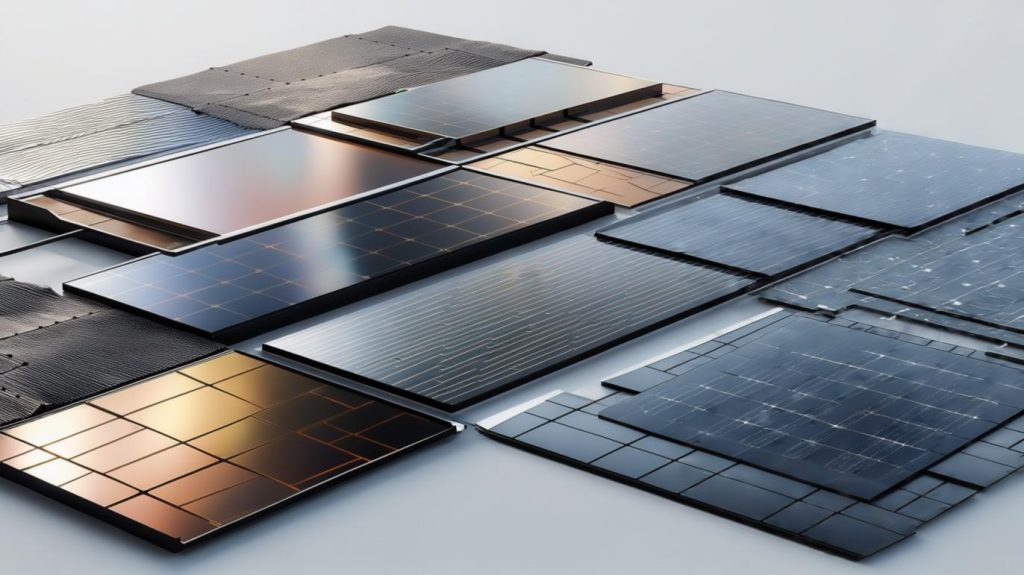New Solar Panel Technology and Transparent Solar Panels: Exploring the Future of the Solar Energy Industry
Table of Contents
1. A New Era in Solar Innovation
2. The Solar Shift in a Nutshell
3. The Evolution of Solar Panels: From Silicon to Smart Surfaces
4. What Are Transparent Solar Panels (TSPs)?
5. Applications of Transparent Solar Panels
6. Why Transparent Solar Panels Are a Game-Changer
7. Challenges and Limitations of Transparent Solar Panels
8. India’s Role in Solar Panel Innovation
9. Global Leaders and Breakthroughs in Transparent Solar Tech
10. Conclusion: A Brighter, More Transparent Future
11. Key Takeaways
A New Era in Solar Innovation

The solar energy industry is evolving at an electrifying pace. From bulky rooftop installations to sleek, almost invisible alternatives, new solar panel technology is transforming how we think about renewable energy. Among the most exciting breakthroughs is the rise of transparent solar panels, an innovation that might soon turn everyday surfaces like windows and mobile screens into power sources.
In this blog, we’ll explore how these cutting-edge technologies are shaping the future of the solar energy industry and what they could mean for both consumers and global sustainability efforts, with a special focus on developments in India.
Here’s the Solar Shift in a Nutshell
Transparent solar panels (TSPs) and other emerging technologies are redefining solar energy. No longer limited to rooftops, solar power can now be generated through windows, glass facades, electric vehicles, and even mobile screens. These panels allow visible light through while absorbing ultraviolet and infrared wavelengths to produce electricity.
While their efficiency is currently lower than traditional silicon panels, the potential for seamless integration into urban infrastructure makes them a revolutionary step forward. Combined with innovations like perovskite cells, bifacial panels, and solar tiles, the future of solar is flexible, aesthetic, and highly adaptable.
Want to understand how these panels work, where they’re being used, and how India is becoming a global leader in solar innovation? Read on for a full breakdown of the science, applications, and real-world progress.
The Evolution of Solar Panels: From Silicon to Smart Surfaces

Traditional solar panels, usually composed of monocrystalline or polycrystalline silicon, have long been the cornerstone of solar energy systems. These panels have steadily become more efficient, affordable, and accessible. However, they still pose limitations in aesthetics, flexibility, and integration into modern infrastructure.
Enter new solar panel technologies, which aim to address these issues and push the boundaries of what solar energy can do.
Key Innovations in Solar Technology:
- Perovskite Solar Cells: Lightweight, flexible, and easier to produce than silicon panels. Perovskite cells have demonstrated efficiencies of over 25% in lab conditions.
- Bifacial Panels: Capture sunlight from both sides, increasing energy output per square metre.
- Solar Skins and Custom Panels: Blend into roofs and building materials.
- Solar Tiles and Shingles: Dual-function roofing and energy generators.
What Are Transparent Solar Panels?
Transparent solar panels (TSPs), also known as solar glass, can generate electricity while letting visible light through. These use materials like organic photovoltaic (OPV) cells or transparent luminescent solar concentrators (TLSCs) to absorb invisible wavelengths such as ultraviolet (UV) and infrared (IR).
Where Can Transparent Solar Panels Be Used?
- Commercial Buildings: Glass facades can generate electricity without reducing daylight.
- Residential Windows: Standard windows become energy-generating.
- Electric Vehicles: Transparent panels can power onboard systems.
- Mobile Devices: Screens with built-in solar charging.
Why Transparent Solar Panels Are a Game-Changer

The ability to integrate solar energy into everyday surfaces opens the door to virtually unlimited applications. Imagine skyscrapers that power themselves, or trains with energy-harvesting windows. This shift from ‘installing’ to ‘embedding’ solar power marks a monumental leap in renewable energy.
Key Benefits:
- Aesthetic Appeal: Seamlessly integrated designs.
- Urban Use: Ideal for cities with limited rooftop space.
- Scalability: Endless surfaces can now generate power.
- Net-Zero Goals: Helps meet sustainable architecture targets.
Challenges and Limitations
While promising, transparent solar panels currently offer lower efficiency (5–10%) than traditional panels. However, their widespread applicability makes them valuable.
Other limitations include:
- Durability for outdoor use.
- Higher Costs compared to conventional solar.
- Early-Stage Technology: Most options are still in prototype or initial commercial stages.
India’s Role in the Future of Solar Technology
India is emerging as a global leader in renewable energy. With support from policies like the National Solar Mission and smart city projects, it is driving innovation in the solar sector.
Indian Research and Development
- IIT Bombay and IIT Kanpur are working on transparent solar cells and perovskite materials suited for Indian climates.
Smart City Integration
- Cities like Indore, Pune, and Surat are exploring building-integrated photovoltaics (BIPV) as part of green infrastructure.
Corporate Leadership
- Infosys has implemented solar-integrated glass facades across campuses in Bengaluru, Pune, and Mysuru, paving the way for transparent solar adoption.
Indian Railways Initiatives
- Indian Railways aims for net-zero emissions by 2030 and is exploring solar technologies for trains and stations. Trials are ongoing in collaboration with CSIR labs.
Indian Industry and Startups
- Waaree Energies and Vibrant Energy are looking into flexible and aesthetic solar modules for B2B clients.
India’s tropical climate, dense urban areas, and growing demand for green buildings make it a strong candidate for the mass adoption of transparent solar panels.
Global Examples to Watch
- Michigan State University developed a transparent solar concentrator that could meet up to 40% of U.S. electricity demand if scaled nationwide.
- Ubiquitous Energy, a California-based company, is creating ClearView Power™, a transparent solar coating already being integrated into building glass.
A Brighter, More Transparent Future
With ongoing R&D and growing interest from architects, tech companies, and governments, transparent solar panels and other new solar panel technologies are set to revolutionise energy generation. India, with its policy backing and market potential, is likely to be a key player in this transformation.
As adoption increases and efficiencies improve, it’s not a question of if these innovations will go mainstream, but when.
Key Takeaways
- New solar panel technology is making solar energy more versatile and efficient.
- Transparent solar panels can turn windows, facades, and mobile screens into power sources.
- India is playing a proactive role in developing and deploying solar innovations.
- Urban planning and smart cities will be major beneficiaries.
Sources:
https://www.reddit.com/r/science_tldr/comments/1gvtrb8/revolutionizing_solar_panels_with_longlasting/
https://news.northwestern.edu/stories/2023/11/perovskite-solar-cell-efficiency-record
https://news.nus.edu.sg/perovskite-solar-cells-set-new-world-record-for-power-conversion-efficiency
https://www.perovskite-info.com/researchers-develop-perovskite-solar-cell-2605-efficiency-using-3d2d
https://en.wikipedia.org/wiki/Luminescent_solar_concentrator
https://en.wikipedia.org/wiki/Ubiquitous_Energy
https://www.thehindubusinessline.com/business-tech/iit-bs-perovskite-solar-cell-achieves-record-breaking-26-efficiency/article67033549.ece
https://www.architecturaldigest.com/story/colorful-solar-panels

